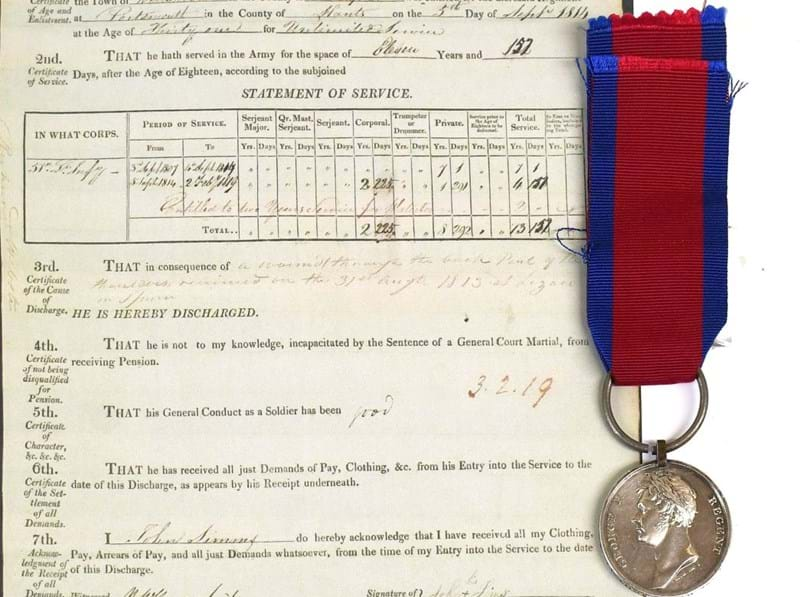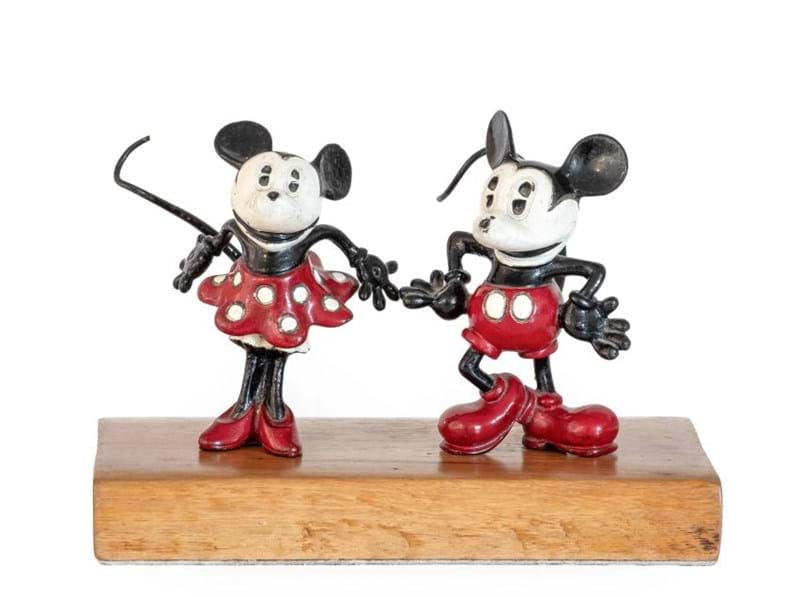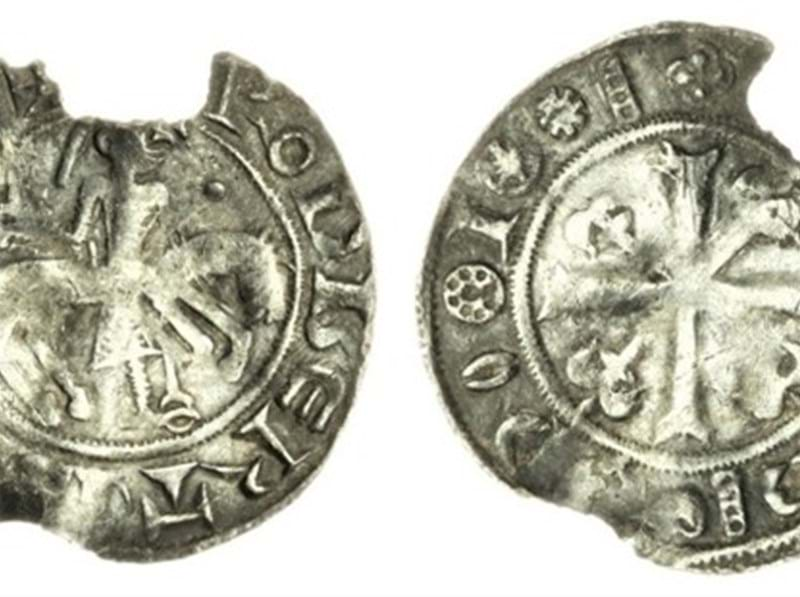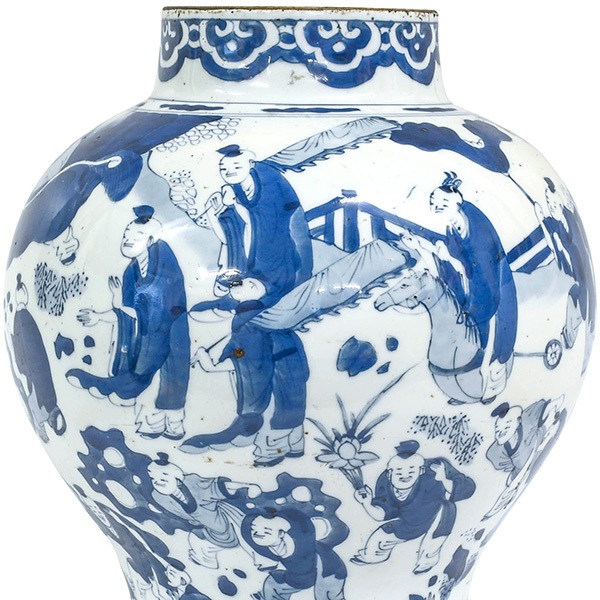Robert ‘Mouseman’ Thompson (1876-1955) began his working life as a village joiner in Kilburn, in the Hambleton Hills, but soon developed his own signature style working on both church and private commissions. Inspired by the traditional materials and craftsmanship of medieval carvers and joiners, he produced simple, honest, handmade oak furniture inspired by the Gothic age, which fit perfectly in with the principles of the Arts and Crafts movement. Mouseman furniture and furnishings are a firm favourite at auction, none more so than the iconic monk’s chair.
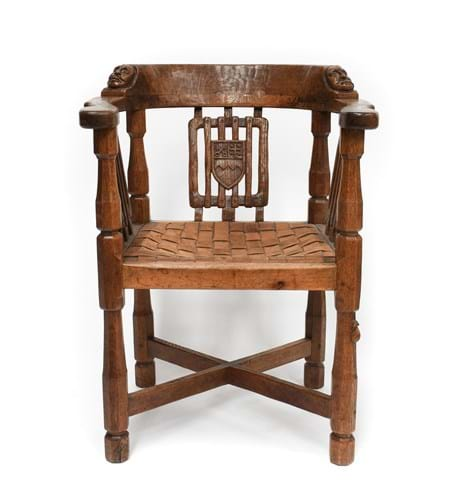
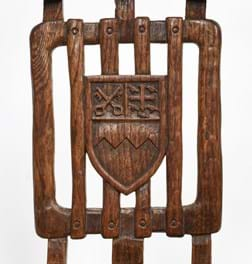
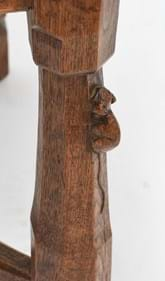
An English Oak Monk's Chair, circa 1929,
each side carved with a monk’s head, over three gridiron panels, the centre gridiron with the Ampleforth Abbey coat of arms.
Estimate: £2,000-3,000 plus buyer’s premium
To be sold in the 20th Century Design Sale on 2nd March.
One of Robert Thompson’s first important commissions as a joiner was for nearby Ampleforth Abbey, and he produced furniture for both the abbey and the college throughout the 1920s. The monks at the abbey requested he design a comfortable chair in which they could rest between services. The result was the monk’s chair, squarely proportioned with sturdy legs and broad arms, a gently rounded back and a leather seat. Joining the back and the seat were carved ‘gridiron’ panels in reference to St. Laurence, the patron saint of the abbey who was martyred on a gridiron. Carved on the backs of the arms were frequently humorous characterised monks’ heads, some frowning, some smiling and some angry. Often the monks appear asleep, and irreverent touch which testifies to the close relationship Robert had with the abbey; not all tradesmen could have gotten away with such liberties.
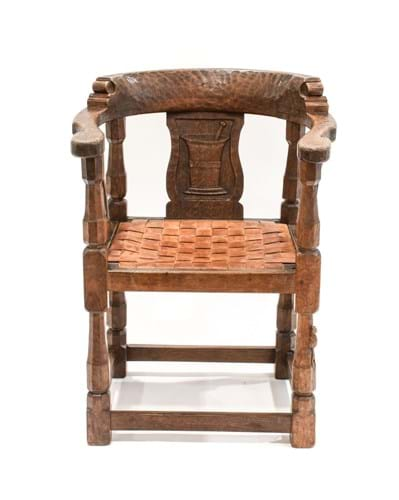
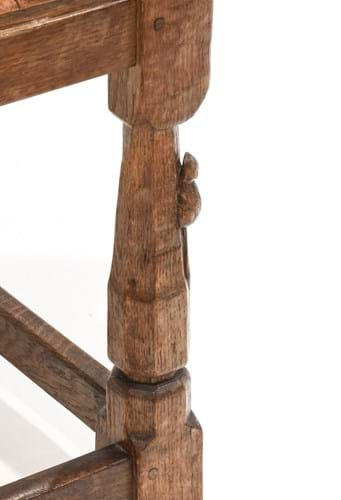
An English Oak Monks Chair, c1928/9,
with three solid panels each carved with a mortar and pestle.
Trademark mouse with slightly raised head.
Sold for £8,000 in 2023
Such was the popularity of the design, that versions for the domestic setting were soon in production. Whilst the gridiron and monks’ heads were often included in the domestic versions, Robert frequently personalised the commissions by carving different motifs on the side panels or changed the carved heads on the backs of the arms. Combining Robert’s characteristic use of solid oak and octagonal legs with his eye for design and skilled carving, the monk’s chair embodies his style.
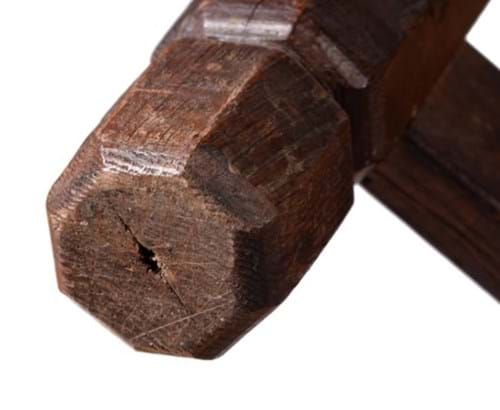
A 'Pop Mark' on the leg of a monk's chair
Still being made by the Thompson family today, the monk’s chair has changed little. However, in it’s first four decades of life, it had a clear evolution of design, which can help age early examples. Initially, monk’s chairs were constructed with a ‘square’ stretcher, the rails running between one leg and the next. However, circa 1929 the switch was made to a ‘cross’ stretcher with the rails running diagonally between the front and back legs. Before the mid-1930s pop marks (small indentations) were found on the base of each leg, made when the oak was held on the lathe to be turned before being shaped into an octagon on the bench. From the mid-1930s onwards the whole process was completed on the bench, and the marks disappeared. In the 1920s and 1930s the mouse trademark was carved on the upright support between the front of the arm and the seat, whereas in the 1940s it was lowered to the top of the leg. Again, in the 1920s and 1930s the seat was made from woven leather strips, but by the 1940s it had been replaced by a slung leather seat before finally being fully upholstered in leather in the 1950s.
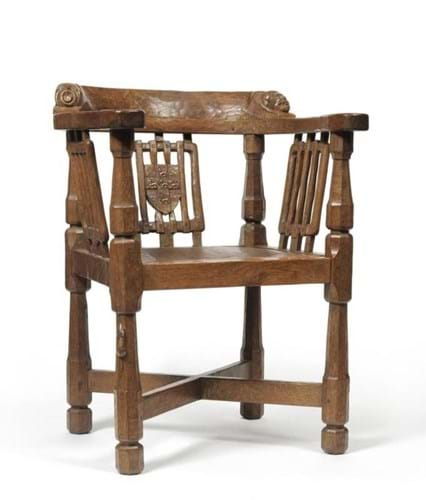
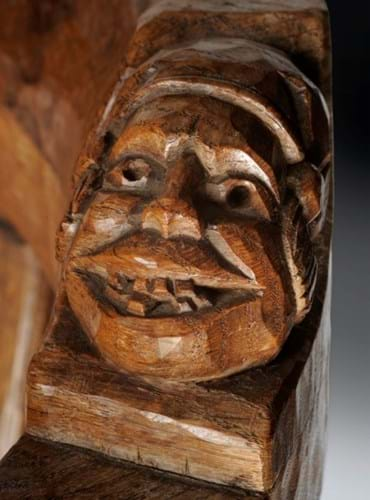
An English Oak Monk's Chair, circa 1930's,
carved with the devil showing his protruding tongue and a village idiot, over three griddle panels, the centre griddle with a shield carved with the coat of arms of the city of York,
Provenance: St. Chad's Church, York.
Sold for £6,500 in 2013
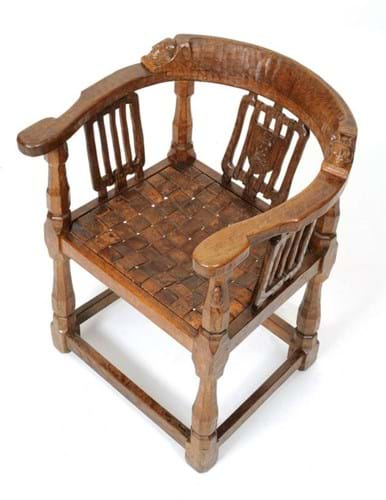
An English Oak Monks Chair, 1928,
carved with a devil showing protruding tongue and a clergyman's head, over three griddle panels, the centre griddle with a shield depicting a skull and crossbones dated 1928.
Sold for £4,200 in 2010
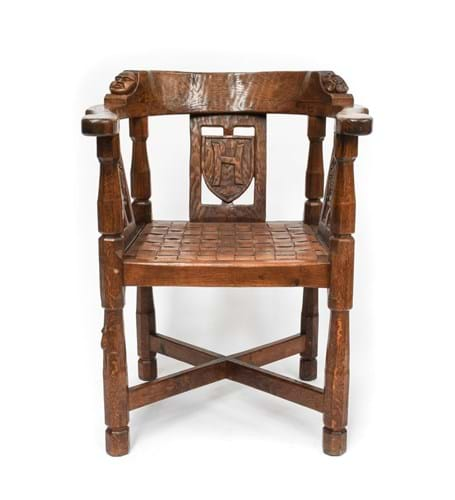
Two English Oak Monk's Chairs, circa 1930s,
carved with a monk's head and a rose, over three panels, the centre with a shield and carved H (Horlicks),
Each: Estimate: £2,000-3,000 plus buyer's premium
To be sold in the 20th Century Design Sale on 2nd March
VIEW 2nd March 20th Century Design Sale Details













